By Audrey Cress
Just four flights up a creaking elevator ride and around a carousel of skinny steps, a circular room is echoed with intentional commands spoken over each other, words that pilots and passengers lives rely on. Air traffic controllers will tell you that what looks like an exhausting constant vigilance gets easier over time.
“The best service we can give is a service nobody even knows we gave,” said Johnny Crosby, controller at the Northeast Regional Airport in St. Augustine.
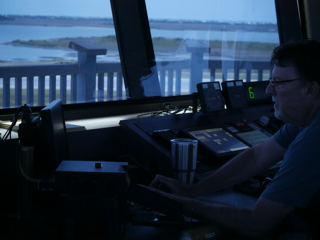
However, that behind-the-scenes work that goes on every day without any awareness comes under more scrutiny whenever there is an accident, especially one like on the Jan. 29 when an American Airlines passenger jet and an U.S. Army helicopter collided over the Potomac River outside of Ronald Reagan National Airport in Washington, D.C., killing 67 people.
While investigation proved fault was not within the control tower, questions always get asked of traffic controllers when there is a loss of life, especially when it is in the nation’s capital and outside of one of the most important airports in the country.
“It caught everybody on their heels … but I have noticed a gentler nation to us. People think of us in a better light,” said Crosby.

What thrives in the dark dies in the light. That remains true with the issues air traffic controllers have dealt with for years, including a serious staffing shortage.
“I’m here to tell you there are not enough air traffic controllers, and we absolutely have to continue addressing it. There are only 10,800 certified controllers in the entire country right now. We are supposed to be at 14,335,” said NATCA president Nick Daniels during an interview with CNN in February 2025.
Because an investigation of the crash in January revealed that staffing was not “normal” during the time of the collision, the issue has been discussed more now than in the last 10 years.
“Usually, it takes an accident or something bad to happen for changes to happen. It’s unfortunate to say, but in aviation the rule books are written in blood,” said St. Augustine controller August Lambrose.
Pulling what is most often behind-the-scenes, front and center has brought attention to the pressure of the career. The accidents they witness haunt them for the rest of their careers. Lambrose tells tales of a pilot going off the end of the runway, flipping upside-down in the marsh. There was a challenge getting the search and rescue team to her, and while he was waiting for them to arrive with an airboat, he was speaking to her on the radio.
“I talked to her for about 40 minutes while they were trying to coordinate the rescue and they couldn’t get to her in time. The high tide rolled in and filled the cockpit, and she drowned while she was talking to me. That was the worst day of my career. You just feel so helpless,” said Lambrose.
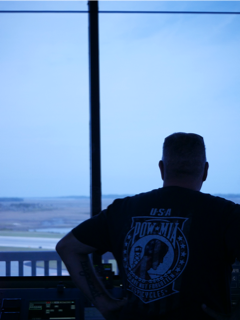
These events take a toll on the health and well-being of the controllers. He explained that while staffing shortages are a very present concern, they have ways of taking a load off each other, splitting up the time between ground control and the more stressful, air traffic control. They also ensure regular breaks so not to get overwhelmed.
“As much as I love this job, I hate this job. It’s a love-hate relationship … but it’s what I do,” said Lambrose. He goes on to explain that you will often find controllers looking for regular routes of stress relief when they leave their regular day of work.
“I’d definitely say it’s taken years off my life, no doubt about it … I’m a chain smoker — that’s my one stress relief,” said Lambrose.
Some controllers enjoy the fast-paced, sharp-minded work. John Crosby, former manager for the FAA at JAX International Airport, had made a successful career out of air traffic control and retired as most would. But he missed the rewarding work, and three years after retirement, the St. Augustine airport offered him a part-time position he couldn’t pass up.
“I always say I would do this job for free. I’m not gonna’, but I would because it’s just that enjoyable,” he said.
They have seen the media’s heavy hand in the public’s view of worry surrounding flying after a crash. “You hear about a plane crash and suddenly it’s every other day, but that’s just the news cycle … Each accident has to be looked at individually,” said Lambrose.
They echoed the importance of knowing how many flights land and take off safely every day. The FAA alone handles an average of 45,000 flights daily, and 16,405,000 annually.
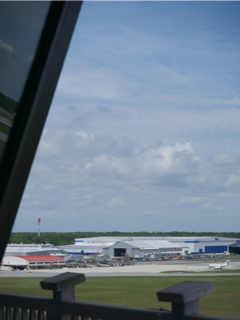
“When you move around millions of flights every year, it’s still the safest way we move humans around this country — by far,” said Crosby.
“The amount of flights that take place is astronomical, and the minuscule amount of accidents that do happen, it’s really small … You really are safer flying than driving in your car every day,” said Lambrose.
While the odds of professional pilots making devastating mistakes is low, the controllers express an added stress at airports like the NFRA, where they are primarily speaking to students who are still learning how to fly and communicate with controllers.
John Carter, a recent graduate from Jax Aero, said it’s reassuring knowing there are air traffic controllers looking out for pilots.

“They’re our guardians watching over us. They are watching over us, protecting us and giving us guidance,” he said. “I have a lot of respect for air traffic control. Student pilots don’t always know how to communicate well with air traffic control, so having a controller that’s willing to work with you and be friendly goes a long way.”
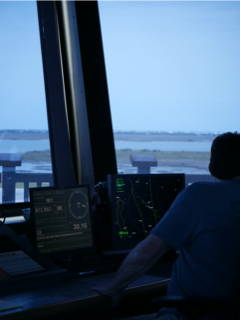
The trust pilots have in their controllers and controllers have in their pilots creates a tight-knit community, giving them a place to appreciate each other and acknowledge the importance of their work.
“Thank God we have each other to back each other up … The local pilots appreciate us. They bring us food, cookies on holidays. That goes a long way,” said Lambrose.
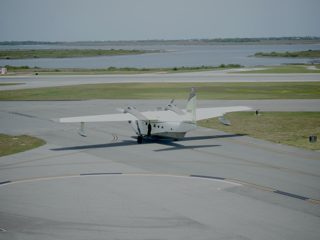



Be the first to comment on "Tower Talk: What controllers have to say about air traffic control"